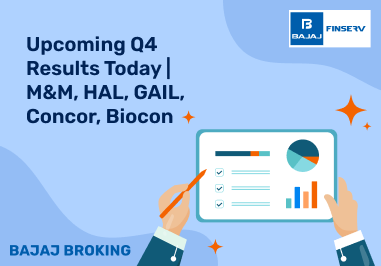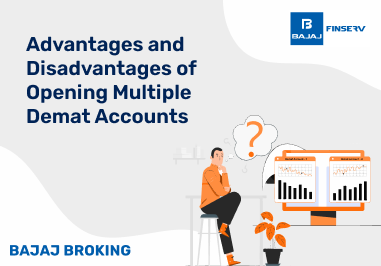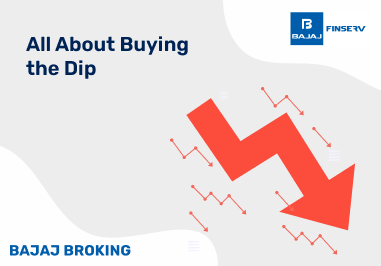How Does a Demat Account Work?
The demat account was first introduced in India in the year 1996 by the National Securities Depository Limited (NSDL). The advent of this account brought about the online trading revolution in the country. Recognising the various advantages of the demat account, the Securities and Exchange Board of India (SEBI) has even made it mandatory to participate in the Indian financial markets.
That said, have you ever wondered how a demat account works? Here’s a closer look at this particular account, how it works and its various advantages.
What is a Demat Account?
Before you we take a look at how a demat account works in India, you should let’s take a look at a brief explanation of what this account really is.
A demat (short for dematerialiszed) account is an electronic account used to digitally safely store and manage securities such as stocks, bonds, mutual funds, exchange-traded funds (ETFs), and other financial instruments digitally. The account holds the ownership details of securities in the form of electronic entries.
How Does a Demat Account Work?
As an investor, you need to know how a demat account works. Here’s a hypothetical example to help you better understand the concept.
The role of a demat account is restricted to simply acting as a repository or storage facility for holding securities in an electronic format. It is aAnother account known as the trading account that actually facilitates the purchase and sale of securities via the stock exchanges. These two accounts are often linked together since the working of a demat account is dependent on the trading account.
Now, assume that you want wish to purchase the shares of a company. First, you need to place a buy order via your trading account. Once you place the order, your stockbroker will forward the same to the stock exchange. Here, the stock exchange matches your order with sell orders at the same price.
If the orders match, the trade is executed and the exchange then forwards the details of the trade to a clearing house. A clearing house is an entity that’s responsible for settling trades between investors. Once the request is received, the clearing house debits the shares from the seller’s demat account and credits them to the demat account linked to your trading account within one day from the date of the transaction (T+1).
Similarly, when you sell the shares of a company, the sell order that you place via your trading account is forwarded to the stock exchange. Your order is executed and the stock exchange forwards the details of the trade to the clearing house, whicho then debits the shares of the company from your demat account and credits the same to the buyer’s demat account.
Additional Read: How Does a Trading Account Work?
What are the Advantages of a Demat Account?
Now that you know how a demat account works in India, let’s take a look at some of the key advantages that it offers to both investors and companies.
- Safety
Before the advent of the demat account, investors used to receive physical certificates representing their ownership of securities. However, physical certificates came with their own set of risks such as loss, theft, damage and forgery. Since securities are stored electronically in a demat account, these risks have been successfully eliminated. Also, the process of securities trading has been made more efficient.
- Convenience
A demat account can be accessed online over the internet at any point in time and from anywhere in the world. In fact, you don’t even need a computer to access or manage your investments. Both the depositories in India – the National Securities Depository Limited (NSDL) and the Central Depository Services Limited (CDSL) – offer dedicated smartphone applications that allow you to access your demat account even while you’re on the move.
- Faster and Smoother Transactions
Trading physical securities was a hugely time-consuming exercise and required a lot of effort. Investors had to visit the stock exchange physically and get in touch with other potential buyers and sellers. Furthermore, the transfer of securities also took time. However, thanks to the demat account, you can purchase and sell securities online via the stock exchanges within seconds. The transfer of securities is automated and is usually completed within a day from the date of the transaction (T+1).
Additional Read: How To Open Joint Demat Account?
- Lower Costs
There were a lot of costs associated with the handling of physical securities. This included stamp duties, storage charges, handling charges and courier charges, among others. With a demat account, except for stamp duty, all other costs have been eliminated. Most stockbrokers these days are offering zero brokerage plans, reducing trading costs even further.
- Corporate Actions
Disbursing benefits to investors during the time of physical certificates was a challenging task for listed companies. Many bonus shares, stock splits and dividends were left unclaimed by investors for years. Thankfully, with demat accounts, disbursing such benefits has now been made effortless. In the case of bonus shares and stock splits, the company automatically credits the demat accounts of its investors.
Additional Read: How To Sell Shares From Demat Account?
Conclusion
With this, you must now be aware of how a demat account works. The demat account along with the trading account are crucial components of modern-day trading and investing. It is due to the introduction of these accounts that the online trading process in India has become faster, safer, transparent and more efficient.
Disclaimer: Investments in the securities market are subject to market risk, read all related documents carefully before investing.
This content is for educational purposes only.
Share this article:
- Related Articles
- Top Articles

Share Market Today | Gift Nifty Positive, US Markets Soar
16 May, 2024 | 5 Min. read

Commodities Market Today | Crude Up by 0.78%
16 May, 2024 | 1 Min. read

Gold Rate Today | Gold Prices Rally, Up 1.2%
16 May, 2024 | 2 Min. read

Upcoming Q4 Results Today | M&M, HAL, GAIL, Concor, Biocon
16 May, 2024 | 3 Min. read

Coal India & NMDC Explore Lithium Mines in Chile and Australia
16 May, 2024 | 2 Min. read

Centre Slashes Windfall Tax on Crude from ₹8,200 to ₹5,700/MT
16 May, 2024 | 2 Min. read

Thermax Eyes Green Hydrogen as Key Investment Segment
16 May, 2024 | 2 Min. read

Mastering Indian Intraday Trading: Strategies & Tips
16 May, 2024 | 5 Min. read

Understanding Insider Trading: SEBI Regulations, Reasons, and Punishments
16 May, 2024 | 5 Min. read

Best Real Estate Stocks in India
16 May, 2024 | 5 Min. read

Discover Best Stocks Under Rs. 100
16 May, 2024 | 4 Min. read

Mastering Stock Market Trends: Understanding and Applying Trend Analysis Technique
16 May, 2024 | 4 Min. read

Analysis to Become a Pro Investor
28 Dec, 2023 | 4 Min. read

Women In Real Estate Investing (Investree)
28 Dec, 2023 | 5 Min. read

How To Check Prudent Corporate Advisory IPO Allotment Status
27 Dec, 2023 | 3 Min. read

How To Boost Credit Score? – Steps to Improve Creditworthiness
27 Dec, 2023 | 4 Min. read

Advantages and Disadvantages of Opening Multiple Demat Accounts
26 Dec, 2023 | 4 Min. read

7th CPC LTC: Leave Travel Concession Rules for Central Government Employees
26 Dec, 2023 | 4 Min. read

7th Pay Commission: House Building Advance (HBA) Interest Rate FY 2023-24
26 Dec, 2023 | 5 Min. read

The Future of Trading: Exploring Bajaj Broking’s Demat Features
26 Dec, 2023 | 6 Min. read

7th Central Pay Commission Cpc Fitment Table
23 Dec, 2023 | 7 Min. read
All Categories
- All
- Annual Results
- Authorised Person
- Bonds
- Calculators
- Commodities
- Commodities Market Today
- Company Overview
- Demat Account
- Derivatives
- Global Market
- Global Market And News
- Gold Rate Today Updates
- Group Companies
- How To's
- IPO
- IPO Allotment Status
- Indices
- Intraday Trading
- MTF
- Must Reads
- Mutual Funds
- Nifty 50
- Personal Finance
- Q4 Results
- Quarterly Results
- Refer and Earn
- Sectoral Blogs
- Share Market
- Share Market News
- Share Market Updates
- Stock Market News
- Taxes
- Technical Analysis
- Top Gainers And Losers
- Trading Account
- US Stock Market
- YouTube Blogs
Read More Blogs
Our Secure Trading Platforms
Level up your stock market experience: Download the Bajaj Broking App for effortless investing and trading







